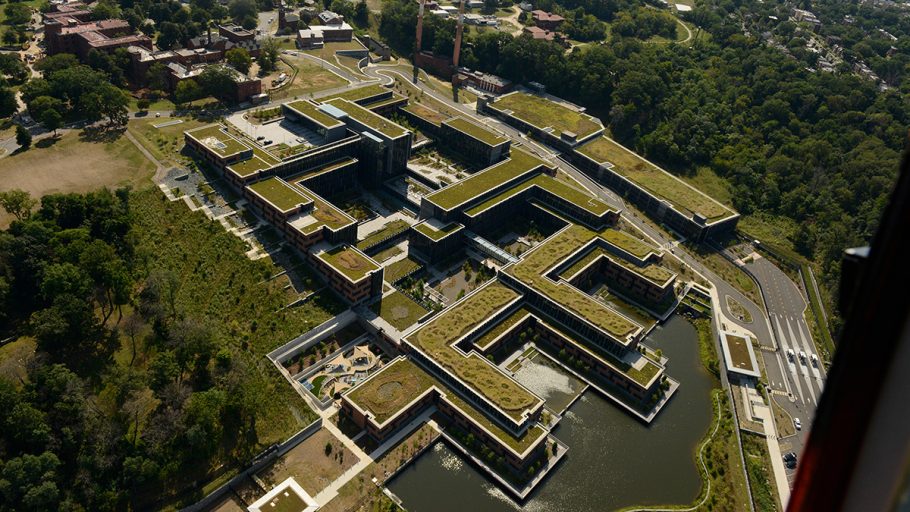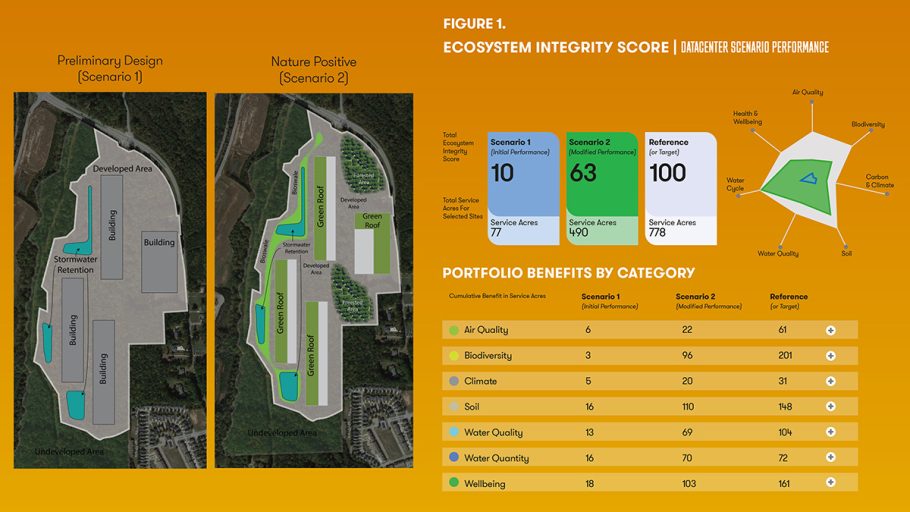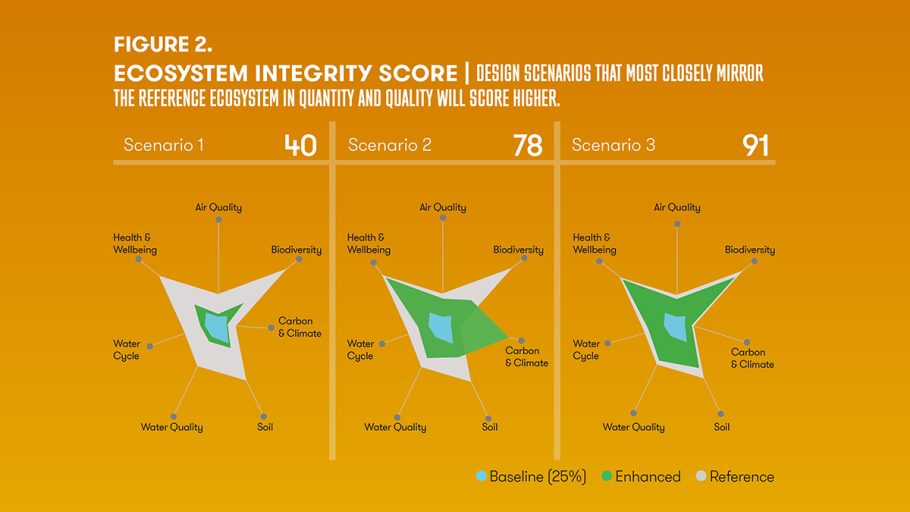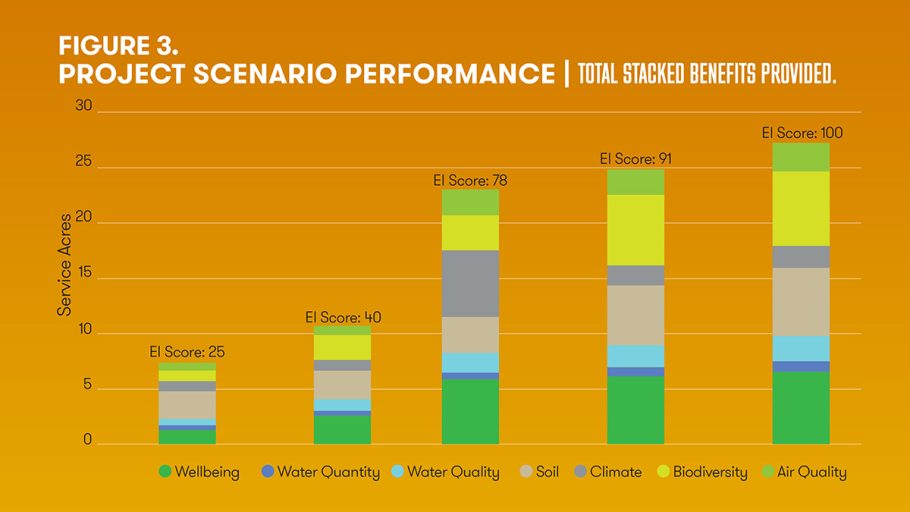In the last twenty years, Power Usage Effectiveness (PUE) has driven improvements in efficiency and designs for data centers. The rapid expansion of cloud technology and the emerging field of AI indicates this growth will accelerate even further, which will undoubtedly continue presenting challenges around the impact of data center activities on the environment.
Fortunately, the data center industry has proactively responded, with companies making ESG a priority. Water usage and carbon emissions have taken center stage for companies and organizations like iMasons, where the sponsorship of hundreds of companies is driving reduced Scope 3 emissions. However, solving these issues alone will not ensure the long-term thriving of humanity. For that, a bigger vision is needed.
My belief is that the data center industry is one of the greatest industries ever and I have been blessed to be a part of it, yet its rapid growth demands responsible expansion to ensure a prosperous future for generations. The journey to this understanding began for me about a decade ago, during the development of data center sites. An aerial drone captured an image that revealed both the initial construction phase and the extensive clearance of hundreds of acres of forest for a new data center site. This striking visual propelled me into deep reflection on the environmental footprint of data centers: How can data centers become one with their surroundings and function with, rather than against, nature? How can our industry be an example to other industries by investing in the future?
This article proposes a visionary shift in the industry’s approach to environmental sustainability. Here I advocate for a paradigm that transcends traditional metrics and positions data centers as proactive agents of ecological regeneration, and I introduce a tool that examines the ecological performance of a development site before and after development. This Ecosystem Intelligence (EI) platform offers a metric that measures how close a data center is to being ecologically invisible through seven distinct measurement categories. This tool has been in development for 20 years.
My hope is to inspire the data center industry to take a more holistic approach to understanding ecological impact in order to promote the long-term health of the planet so that everyone, including our industry, can thrive.
Redefining Efficiency Beyond PUE, CUE, and WUE
Over the years, our industry has made remarkable improvements in efficiency. Before the 1990s, data centers were just closets or large rooms housing servers, with more advanced ones containing mainframes with water cooling. Enterprises drove the designs, and standards emerged through organizations like the Uptime Institute (the four tiers). The focus was on fault tolerance rather than efficiency.
In the late 1990s, many of us, including the Uptime Institute, started sharing best practices to optimize data center performance with many enterprise data center operators. On one fortuitous trip to Tokyo, I met with a customer who very willingly accepted the challenge to adopt the best practices to improve their efficiency. After multiple visits, I was pleased with their commitment to following the best practices. However, when all was said and done, they did not like the fact the “hot-aisle” was hot, so they decided to revert back to their old layout since it was more “comfortable.” I was shocked and told him, “But you are running more efficiently,” to which they responded that there was no way to measure this.
On the flight back to the US, I was sitting in the cabin distraught about the previous day and could not sleep. The customer was completely right: If you can’t measure, you can’t improve. At some point in the 14 hour flight, I came up with the PUE concept to solve this customer’s problem. This metric was used internally at HP for about six years until we went public with it in 2006 in a paper I co-authored with Chris Malone. At that time, data centers had a PUE of 2.0–3.0 (or worse). Through industry adoption, we are now between 1.0–1.5; we’re using half the energy we would have if we did not have a metric to measure. But now that we have adopted practices that have gotten us close to 1.0, we have reached a point of diminishing returns. It’s clear that the PUE metric sparked a revolution in data center efficiency by significantly reducing energy waste and setting a new industry standard, yet it’s also clear that the path to genuine sustainability—for both the industry and the planet—must encompass a more holistic view of data centers’ environmental impacts. So, what next?
Our industry has been obsessed with finding workload-based performance metrics. However, it doesn’t feel like we’re any closer to that holistic view because of the diversity of workloads and the impossibility of normalizing them. While my focus has been on driving out cost, reducing complexity, and driving efficiency, my obsession has been to make the data center “disappear.” This was the motivation behind running servers in a tent in 2008. Sean James and I showed that we didn’t need chillers and could make data center structures much simpler and improve PUE further. PUE, while there were naysayers and it took six years, was an easy sell. CUE (carbon usage effectiveness) and WUE (water usage effectiveness) were attempts to capture a broader set of environmental concerns and have had limited adoption. Still, these are all only single-dimension metrics.
At the time, I didn’t realize that there should be a much broader way of looking at the concept of making the data center “disappear.” My world changed four years ago when we hired Kaitlin Chuzi to our R&D technology team at Microsoft. The notion of this team was to hire diverse disciplines to break through the technology silos of the past. Kaitlin, as a specialist in Biomimicry focused on eco-efficient and technologically forward-thinking advancements, brought a perspective that completely changed my own technological biases. Shortly after she joined our team, she made the case for integrating nature into our designs by showing me the Coast Guard HQ building.
The Coast Guard HQ building is embedded in the side of a hill, with multiple levels of the structure stepping down the hillside. The facility is blanketed with green roofs that filter toxins and other impurities from the stormwater runoff, so by the time it reaches the wetlands at the bottom, the water is clean. Of course, I tried poking a hole in this structure by asking, “How often do we have to replace the soil with all of the toxins that are trapped in the roof?” Her response rocked my thinking: “You don’t get it, Christian, the organisms in the soil feed and break down the impurities, so it will filter forever.” She opened my eyes to the concept of mutualisms, meaning the design made things better for the environment while still performing the function needed for the office building. Moreover, in this case it was a forever filter with no maintenance. It made me wonder how we can build data centers to do this same thing, and how we can measure the impact on the natural environment. For years we’ve been focusing on energy efficiency, but now it’s time to take a step further and consider the many additional efficiencies and benefits associated with being ecologically invisible. But to do that we need to be able to measure improvement towards that end.
Imagine if we integrated natural cooling systems like native vegetation for shade, designed green roofs to combat urban heat islands, and passively harnessed cool outside air to cut energy use and costs significantly. Simultaneously, we’d reduce our carbon footprint, support pollinator populations, boost local biodiversity, reduce stormwater runoff, and improve water and air quality.
But the benefits don’t stop there—as data center approval becomes more difficult globally due to constrained resources and public opinion, data center developers will benefit from undertaking deeper consideration of holistic natural impacts beyond just the siloed assessment of traditionally regulated resources (e.g., stormwater or wetland impacts). As “easy options” for new facility siting become harder to find, public opposition in local land use processes and regulatory permitting hurdles will only increase. This dynamic brings to light a host of expanded concerns regarding equity, access to green spaces and healthy natural areas, maintaining protections from visual or noise disturbances, protection of biodiversity, air quality, water quality, sense of place, etc. “Ecologically invisible” data centers will be significantly easier to site and permit while also improving community sentiment.

The Revolutionary Framework of Nature Positive Performance
The Nature Positive movement involves focusing on regeneration and symbiosis with the environment. Inspired by a vision of data centers that blend seamlessly with their surroundings, this approach reimagines our facilities as life-enhancing components of the ecosystems they inhabit. However, imagining change and bringing it to life are two different things! To make change happen, we must be able to envision it, measure it, optimize for beneficial outcomes, monitor progress, and adaptively manage for continual improvement.
The current buzz around these concepts creates exciting opportunities, as well as expectations, for the industry to help restore ecological health on a grand scale. However, there is a lack of clarity or broad-scale adoption of definitions for these terms. What if our industry chose to define these terms relative to benchmarks provided by healthy, functioning ecosystems? If we use local healthy functioning ecosystems as a reference point and elevate our site design and development practices to mimic healthy ecosystem performance, what might that mean for the planet and communities where we operate? If our industry could coalesce around the concept of working to make every site perform like a natural landscape—to make every data center site ecologically “invisible”—could we lead the global need to right the ship, or at least start to narrow the gap between where we are now and where we need to be? Additionally, can our industry lead and be an example to other industries to do the same?
On the surface, this situation may seem overwhelmingly complex, but it’s not, and it’s already being done. The beauty of adopting a “perform like nature” approach is that it is an outcome-based charge, not a rigid and prescriptive one. It’s relevant in all contexts and at all scales, in both the built and natural environments. It doesn’t require that we convert the built environment back to nature, but it does challenge us to make decisions that incrementally move site performance closer and closer to our reference benchmarks. It challenges the talented site design and architecture teams we rely upon to incorporate everything from simple measures like limiting unnecessary impervious surfaces to designing for the future by creating living facilities. Most importantly, it opens new opportunity for innovation. You can’t improve what you can’t measure.
A fundamental aspect of nature and sustainability is that they both represent complex systems with many interconnections and interdependencies. When our problem-solving and decision-making focus narrowly on specific issues or concerns without understanding the relationships within and between systems, we risk making decisions that lead to unintended consequences and a death by a thousand cuts. It’s common for narrowly focused decision-making to solve one problem in the short term while creating a panoply of additional problems that manifest years later.
A well-known example of this phenomenon is how “improvements” made to rivers and stream corridors to manage flooding have resulted in dramatic losses of vital wetland / floodplain habitats, biodiversity, and soil health and replenishment, which often just transfers the flooding problem farther downstream. The costs of these actions are exemplified by the US Army Corps of Engineers (USACOE) efforts between 1962 and 1971 to dredge and straighten the Kissimmee River to provide flood control. After recognizing the significant harm this did to the river–floodplain ecosystem, the USACOE in 1999 started the Kissimmee River restoration project to return the river to its natural condition. The original USACOE straightening project cost 42 million USD, but the restoration project to undo the damage done has cost more than one billion USD.
During this same period, efforts to address the critical issues associated with climate change began to coalesce, and unfortunately, many of the same failures of analysis that dogged river control projects also impacted efforts to address climate change. In an effort to make it simple for people to understand and address climate change concerns, the issue was largely reduced to a singular focus on carbon. There is logic, or at least a rationale, for this over-simplification. The public and policy makers rarely have an appetite for complexity and prefer to support and fund easily understood simple solutions. So, over the past 30 years, we have increasingly intensified and narrowed our focus to carbon. However, as with the flood control projects, these narrowly focused carbon projects have the potential to be detrimental to other aspects of the system—particularly biodiversity.
So, what would it mean for data center developers to build better facilities that account for nature in their design? For a start, it means that while there can still be standardization for efficiency’s sake, that standardization needs to be malleable enough to adjust to local context. Facility planning cannot assume that one size fits all, regardless of the landscape conditions or community context.
Accounting for the complexity of local ecosystems when developing infrastructure can seemingly be a complication for project delivery in a reality that is driven by tight schedules and budgets. This project delivery paradigm has previously meant that any environmental analysis is limited only to what regulation requires. Unfortunately, our laws and regulations only reinforce a siloed approach to thinking about nature. While this set-up doesn’t excuse the failure to think holistically and account for system relationships within project delivery processes, it highlights the obstacles faced in shifting the existing paradigm.
Our industry must now embrace the opportunity to incorporate nature into business decision-making by adopting a metric, as we did with PUE, so that we can benchmark ourselves and start driving behavior for improving the ecosystems around us.
Holistic Ecosystem Impact Quantification and Decision Support
Fortunately, the tools we need to make better business decisions that also benefit nature already exist. Large companies and hyperscalers have been using EcoMetrix Solutions Group’s (EMX) evolving tool, the EI platform, for the past two decades to address this very issue. The EI platform is an evolution of a groundbreaking tool EMX originally developed for The Nature Conservancy and the Dow Chemical Company.
The tool evaluates the ecosystem performance of any landscape—in the built or natural environment—and compares that performance to how intact landscapes in that location should perform. It allows users to create multiple design scenarios to support decisions around optimizing both facility performance and ecological outcomes. Simply put, it provides a benchmark for how a local, intact ecosystem would perform and enables users to compare the performance of their site to that benchmark by way of an Ecosystem Integrity score. Typically, business-as-usual data center designs receive an Ecosystem Integrity score in the range of 15–30 on a 1–100 scale.

Figure 1. Datacenter scenario modeling compared to performance benchmark
This score reflects how well aligned a site is with the reference benchmark for seven key ecosystem services (air quality, biodiversity, carbon / climate, water quality, water quantity, soil quality, and health and well-being) (Figure 1). It’s been a crucial asset in understanding and improving the way data centers interact with and affect their surrounding ecosystems.

Figure 2. Ecosystem Integrity score depicting relative level of performance improvement between design scenarios
The EI platform includes several resources, like a high-level “Screening” or estimating tool and a detailed “Design” tool. Both resources enable users to characterize current (or baseline) site performance, model endless “what-if” design and restoration scenarios, and compare performance to reference site conditions for benchmarking and gap assessment purposes. Its founders are are so committed to the cause of improving ecosystems that they are providing the Screening/estimating tool1 for free to any user. Additionally, the Design tool enables users to monitor performance over time and can be used for verification, ESG reporting, and financial disclosures. Both tools present outputs in a common unit of measure, a “functional acre” or “service acre,” across all metrics so that impacts, benefits, and tradeoffs can be understood in a common language rather than in siloed measures that are difficult to relate to one another.

Figure 3. Stacked benefit representation of design scenario performance for key ecosystem service metrics
The most exciting feature of the EI platform, however, is the Portfolio reporting dashboard. The dashboard uses an Ecosystem Integrity Score to help users explore a performance summary for each site, or for an entire global portfolio, scaled against the Nature Positive benchmark. The dashboard allows comparisons between initial performance, modeled (or achieved) outcomes, and the Nature Positive benchmark, and the Ecosystem Integrity Score provides a “one number” rollup to summarize individual site and/or portfolio-level ecological performance—much like the PUE metric.
In addition to the EI platform, numerous additional tools and resources are becoming available to support the decision-making process as our industry strives to help move global conditions toward a Nature Positive state. However, as we mobilize to maximize our collective impact, we must seek tested, credible solutions that can capture impacts across the system rather than focusing on siloed resources. These solutions must also quantify both impacts and benefits in a common unit of measure that leverages “bottom-up” data and is:
- locally attuned;
- globally applicable;
- relevant at any scale (site-level to landscape-scale);
- simple to use (while providing sophisticated, credible, and science-based outputs);
- scalable and relevant in both built and natural environments;
- able to quantify baseline conditions, model scenarios, and be used for monitoring, verification, reporting, and disclosure purposes; and
- designed to foster interoperability and leverage AI / ML opportunities.
Making a Thriving Future
From the extraction of raw materials to the disruption of local ecosystems, the construction phase is fraught with hidden impacts and often-overlooked environment costs. Recognizing and addressing these issues is not just an environmental imperative—it’s an opportunity to create construction methods that respect and integrate with natural systems. Moreover, the intersection of technology and nature is rich with innovation opportunities to elevate our industry well into the future.
Going nature-friendly has challenges, but also many chances to grow. We need to clear up misunderstandings, develop and use new technology, and come up with new ideas for policies and business. I see a future of rapid innovation where we work together and make the data center industry a leader in caring for the environment while continuing to grow our business. This future isn’t just about keeping things going, but making the world better and healthier, and helping all living things thrive for the rest of time.
But to do all of this we need to be able to measure ecosystem impact to improve. And as with PUE, while not perfect, it directionally pushed our industry to be significantly better. The same is true with ecosystem performance metric proposed here. We need to start now. If we play a finite game in a world we want to perpetuate, it’s game over. So let’s lead the world in playing the infinite game…where we are all winners.
ABOUT THE AUTHOR
Christian Belady is highly experienced in managing data center and infrastructure development at global scale. Currently, he is an advisor and board member of several companies in the infrastructure space. Prior to this, Belady served as Vice President and Distinguished Engineer of Datacenter R&D for Microsoft’s Cloud Infrastructure Organization, where he developed one of the largest data center footprints in the world. Before that, he was responsible for driving the strategy and delivery of server and facility development for Microsoft’s data center portfolio worldwide.
With over 150 patents, Belady is a driving force behind innovative thinking and quantitative benchmarking in the field. He is an originator of the Power Usage Effectiveness (PUE) metric, was a key player in the development of the iMasons’ Climate Accord (ICA), and has worked closely with government agencies to define efficiency metrics for data centers and servers. Over the years, he has received many awards, most recently the NVTC Datacenter Icon award, and was elected to the National Academy of Engineering.



